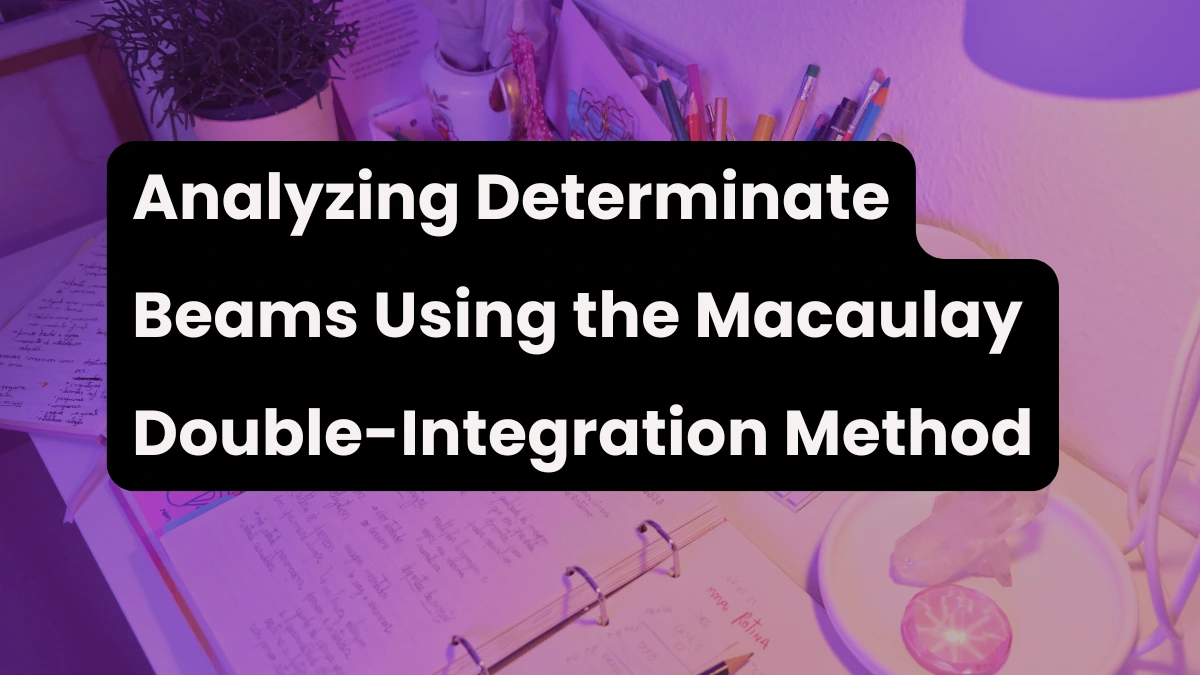Analyzing Determinate Beams Using the Macaulay Double-Integration Method
Determinate Beam Analysis: Beam classification is an important concept in structural engineering because it has a direct impact on how such structures will perform under loads. The Macaulay double-integration method, shown in the guide, is another method well used in analyzing the slope and deflection of beams under different loading conditions.
The guide provides a number of illustrative examples that can help people understand important concepts and methodologies through a structured and systematic approach. This has rendered it an invaluable resource not only to students who are just starting their studies in engineering but also to experienced engineers who need to sharpen their knowledge in this field. Based on this guide, the readers will acquire a clear background in beam analysis and improved problem-solving capacity that is critical in the structural engineering profession.
- Cantilever beam
- Simply-supported beam
The equilibrium equations alone can be used to obtain the reactions of these beams.

Step-by-Step Process:
- Find loading and reactions: Find all external support reactions and loads.
- Establish the bending moment equation (Mx): Form Mx into a piecewise equation, taking into consideration load-induced discontinuities.
- Integrate twice: The slope and deflection equations are obtained by integrating Mx/EI, with constants C1 and C2.
- Boundary conditions: Replace support conditions to get constants.
- Slope and deflection: With the equations obtained above, compute values at important beam points.
Support Boundary Rules
- Fixed Support: slope = 0, deflection = 0
- Hinged Support: deflection = 0, slope ≠ 0
- Roller Support: deflection = 0, slope can vary
Procedure
- Compute reactions (Vₐ, Mₐ, etc.)
- Formulate the Mx equation for each segment
- Integrate twice to find slope and deflection equations
- Apply boundary conditions for fixed and hinged ends
Finally, evaluate the deflection curve y(x) and slope θ(x) at points A, B, C, and D.
Read More: GATE Mathematics Syllabus
Applying Boundary Conditions
- Fixed end: y = 0, dy/dx = 0
- Hinged end: y = 0
- Roller end: y = 0, dy/dx variable
Boundary conditions are applied at strategic points to calculate constants of integration (C₁ and C₂) and ensure the deflection shape matches physical support constraints.
- Be consistent in the sign conventions of sagging (positive) and hogging (negative) moments.
- Definition of Mx across spans: Track distances are important.
- Bearing Beams Practice on beams of various types of loads to reinforce the conceptual knowledge.
- Use the Macaulay method when superposition principles are not applicable.
Top M.Tech Colleges in India






